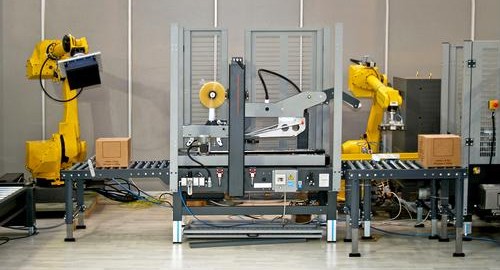
Shipping and receiving stakeholders everywhere continue to adjust to the post-Amazon fulfillment climate, an environment in which delivery speed dominates and delays are unacceptable. However, simply keeping up with current industry standards is not enough. Warehouse operational leaders must prepare for the future. This may seem like an impossible charge in light of the game of catch up in which most warehousing teams are already involved. In reality, businesses can prepare their logistics operations for both short-term and long-term gains due to the fact that modern workflows and technology form the foundation for future processes.
Here are some strategies for future proofing the warehouse that do not hamper ongoing improvement efforts or weigh down the operation:
Embracing automation
Manufacturers and other industrial firms have quickly incorporated automated assets into their shop floor operations. Now, many are employing the same strategy in the warehouse, according to insights from Peerless Research published in Logistics Management. In January 2017, analysts from the organization connected with shipping and fulfillment stakeholders from across the country and found that 67 percent intended to invest considerable funds in cutting-edge equipment over the course of the fiscal year. More than one-quarter of these respondents attested to targeting robotics assets. While these assets carry hefty price tags – a single warehouse robot costs an average of $35,000, according to Bloomberg – purchasing them can lead to more immediate gains while laying the groundwork for future productivity.
'Even more traditional warehouses with human-driven workflows must collect and analyze data to get the job done."
Bolstering backend software
Even more traditional warehouses with human-driven workflows must collect and analyze data to get the job done. This is where warehouse management software comes into play, giving shipping and receiving leaders the power to carefully track the supply chain, along with ancillary activities such as equipment maintenance. Businesses of every size are unlocking the power of these solutions, driving a compound annual growth rate of more than 14 percent in the global WMS market, according to data from Transparency Market Research. It is easy to understand why so many organizations are pursuing such solutions, as they support classic warehousing workflows and processes centered on innovations of the future like internet of things technology and machine learning.
Promoting integration
Modern warehouses are stuffed with disparate operational systems that must work together to benefit shipping and receiving activities and generate real return on investment. However, a significant number of businesses find it difficult to achieve this kind of technological harmony and encounter operational roadblocks as a result. High-performing warehouses, on the other hand, carefully craft and manage their internal systems so as to achieve optimal cohesion, Supply Chain 24/7 reported. Of course, this state of affairs is unlikely to change in the near or distant future, meaning organizations would be wise to invest in integration, as it is critical today and will retain the same level of importance in the warehouses of the future.
Is your business interested in future-proofing its shipping and receiving operations without sacrificing productivity? Connect with F&A Data Systems. We work with cutting-edge industrial technology partners such as Dell, Microsoft and Rockwell Automation to develop and deploy customized warehouse management solutions that support more productive warehouse workflows. Contact us to learn more about how we can transform the warehousing operations at your firm.
